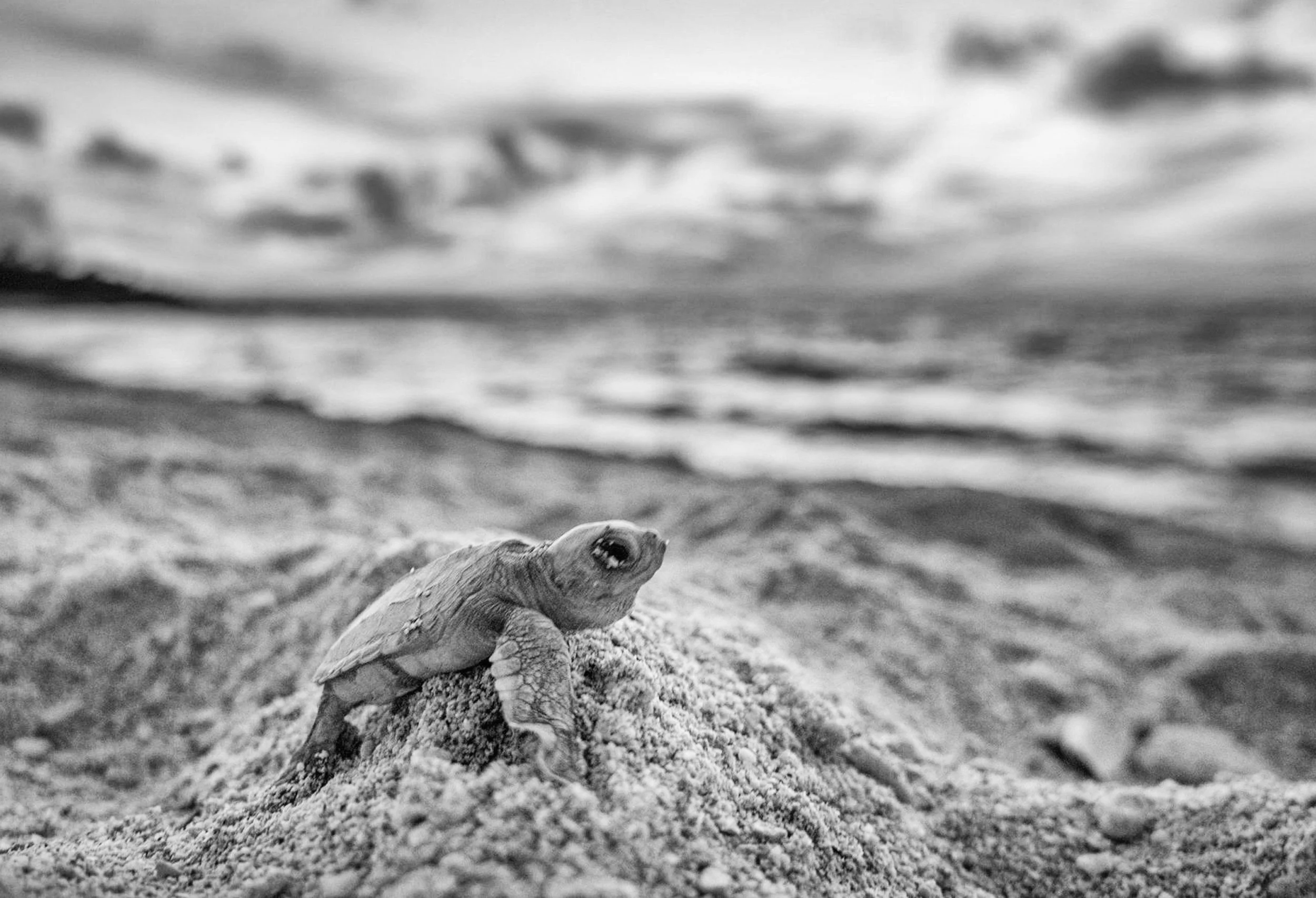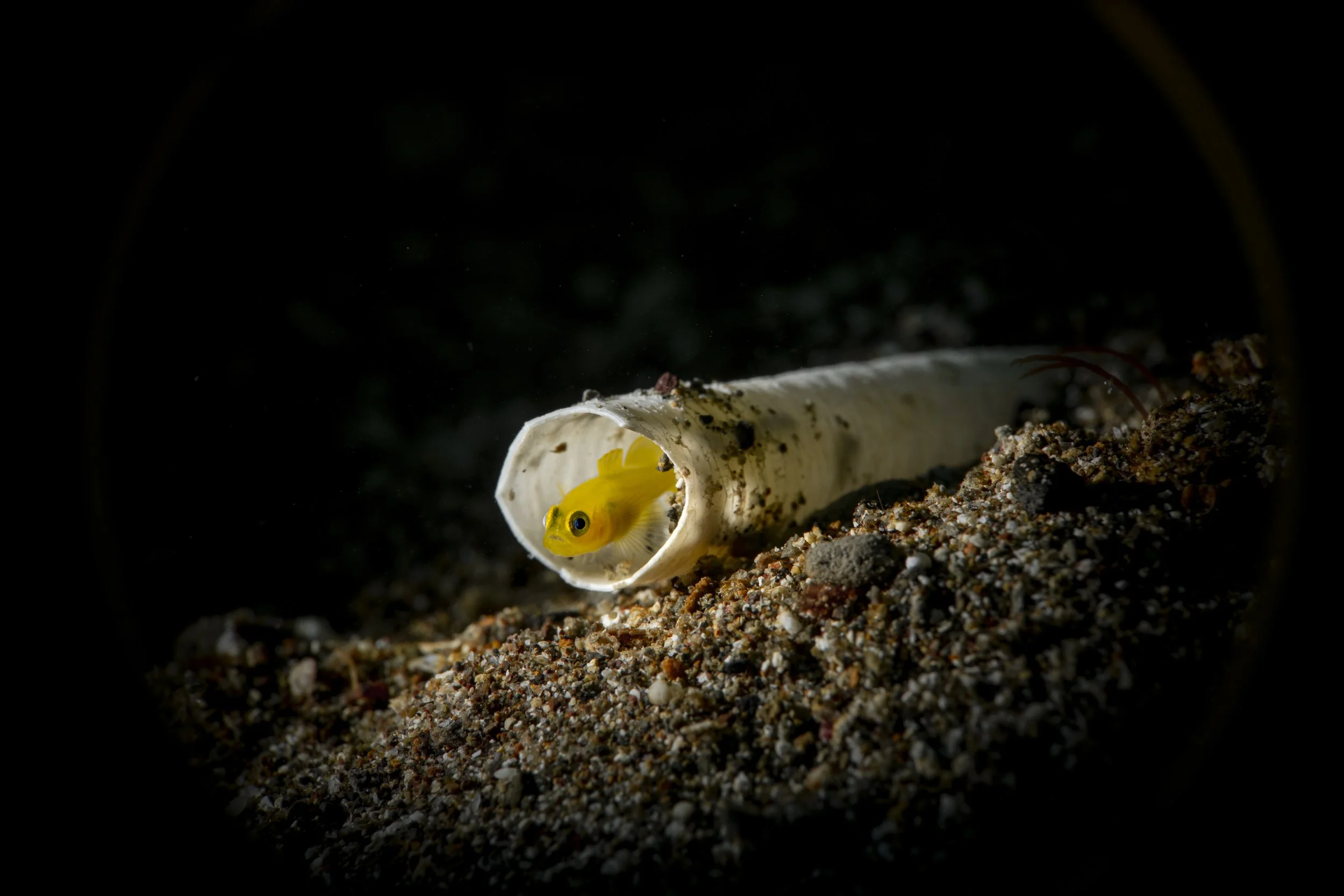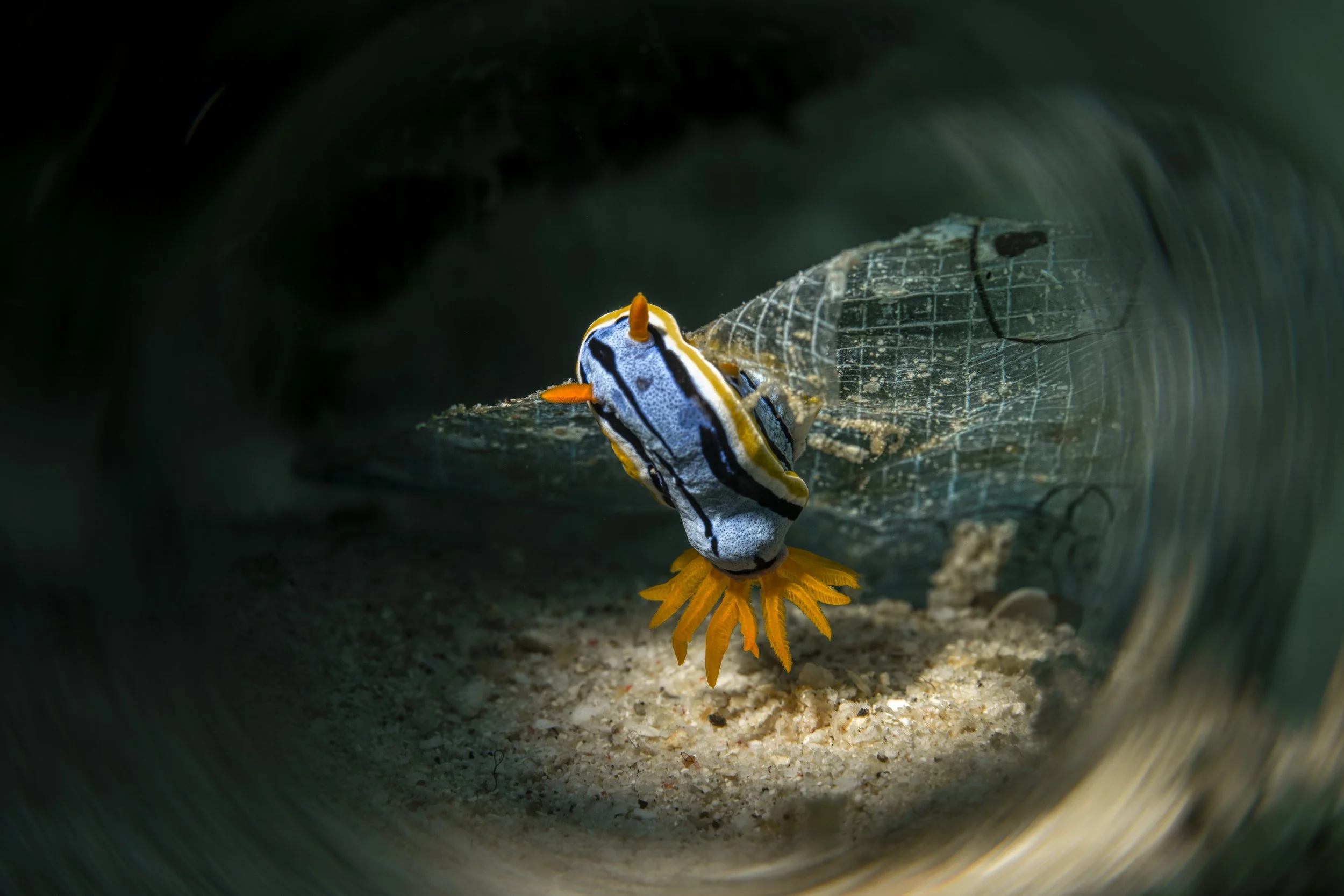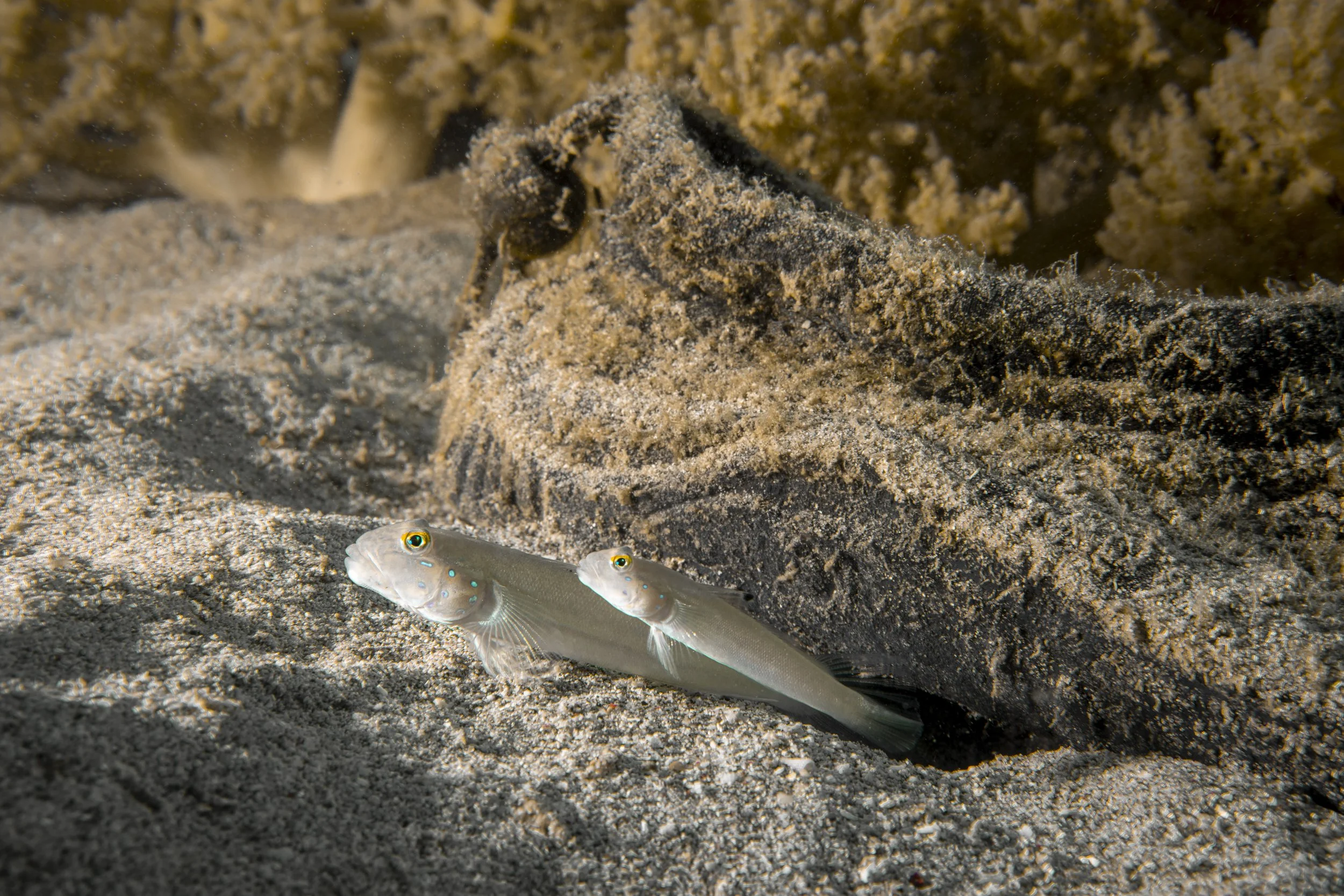CONSERVATION projects
THE LAST OF HER SPECIES
Tortoise trafficking poses a grave threat to the conservation of endangered species and ecosystems worldwide. The illegal trade in tortoises for pets, traditional medicine, and exotic food markets continues to drive populations toward extinction, highlighting the urgent need for stronger enforcement, awareness campaigns and re-wild projects.
"Ruby” is a Batagur trivittata, a Burmese Roofed Turtle and currently the sole surviving female of her species. Despite her endangered status, she fell victim to trafficking out of Myanmar smuggled across borders to a wet-market in Hong Kong with the intent to be sold to collectors in the United States. Fortunately, she was intercepted at the port of entry in JFK and rescued by the Tortoise Conservancy team https://www.turtleconservancy.org/ who are found-raising to help reproduce and re-wild her back in a protected area in her native ecosystem of Myanmar.
NIGHT SHIFT
Akumal, Mexico, renowned for its pristine beaches and vibrant marine life, serves as a critical nesting ground for several species of sea turtles. However, the increasing human presence, Sargassum and other environmental factors threaten the survival of these magnificent creatures.
At night, numerous conservation groups in Akumal undertake the vital task of safeguarding sea turtle nesting sites. To ensure the eggs' safety, all nesting turtles are meticulously tracked, and their eggs are carefully collected and relocated to a protected section of the beach, where data on sea turtle populations, including species, egg count, and nesting date, are recorded. With an average of 120 eggs per nest, this process is essential for the preservation of sea turtle populations. Approximately 60 days later, the hatchlings emerge, and under the cover of night, they are returned to the beach to shield them from predators as they make their way to the ocean.
Shot utilizing long exposures and infrared-converted camera equipment these photos are integral to the environmental education programs aimed at raising awareness about the critical importance of sea turtle conservation among residents, tourists, and local communities.
Yucatan aquifer
The Yucatan Peninsula in Mexico boasts the largest flooded cave systems globally, an intricate network of dark caverns sculpted over millennia. These subterranean labyrinths serve as vital life-supporting conduits, akin to the veins in our bodies, channeling water essential for sustaining the delicate ecosystems above ground.
An ecosystem that is mostly unknown, and while still being explored is already at risk due to the rapid human expansion in the area.
Over the course of 8 years and numerous expeditions, I dedicated myself to exploring and photographing over 250 different cenotes in Yucatan. This body of work is coming together on the book, "Light in the Underworld," to be published by Rizzoli in September 17th 2024, that promises to spark important discussions about this remarkable environment and its conservation. With a foreword by Dr. Alex Mustard and Paul Nicklen, this publication is poised to shed light on the significance of cenotes and inspire action to protect these invaluable natural treasures. https://www.rizzoliusa.com/book/9780847830909/
polluted waters
During my recent visit to the Philippines, I observed firsthand the detrimental impact of plastic waste on the country's rivers and coastal waters. Like in many developing nations, the lack of effective waste management infrastructure, coupled with high population density and rapid urbanization, exacerbates the issue of plastic pollution. As a result, the rivers act as conduits, carrying vast amounts of plastic waste into the oceans, where it wreaks havoc on marine life. My documentation of the distressing interaction between underwater wildlife and omnipresent human waste serves as a stark reminder of the urgent need to raise awareness and address this delicate situation.
time capsule
The underground system of caves in Yucatan form an intricate network of dark caves, shaped over millennia through 22 glaciation cycles and influenced by the asteroid impact responsible for the dinosaurs' extinction. These caves, which dried-out in each glaciation and flooded during the interglacial period, have served as sanctuaries for terrestrial and marine wildlife, preserving them as rich fossil record. Among these relics are the remains of extinct Megafauna dating back 10,000 to 40,000 years old and ancient turtle specimens dating back 200,000 years.
Despite their significance, these underground labyrinths remain largely unexplored and inaccessible due to their challenging technical access. However, they function as remarkable time capsules, encapsulating an extraordinary fossil record that provides invaluable insights into our planet's history.
As a technical cave diver proficient in photography, photogrammetry, and 3D printing, I have collaborated with local paleontologists to digitally capture over 50 different fossils. This collaborative effort aims to contribute to the scientific study and preservation of these fossil record, unlocking further knowledge about our planet's past and human history








































